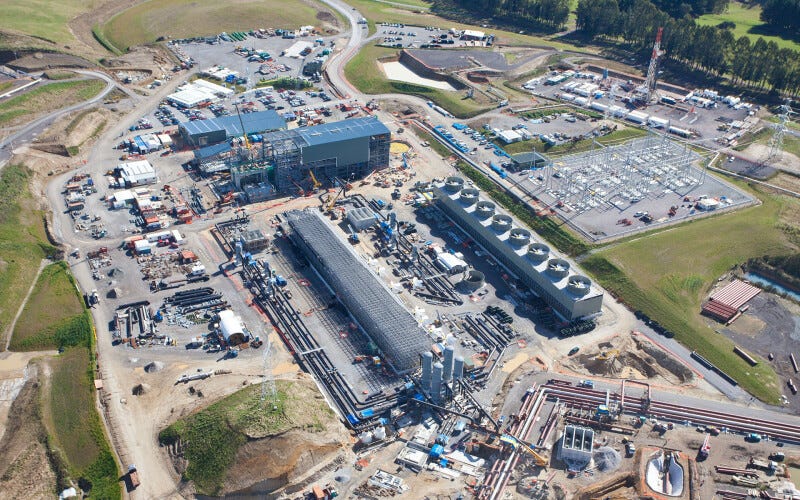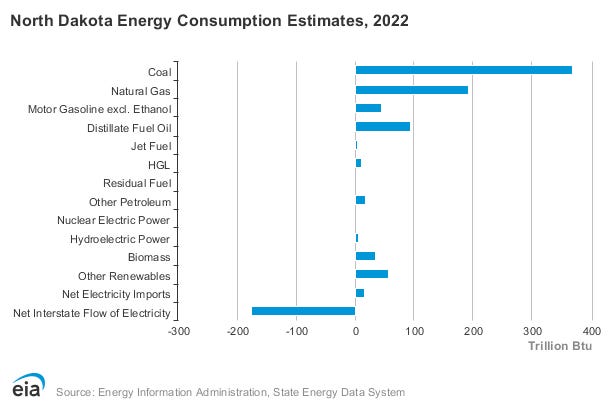Geothermal Weekly - #3
A who's who of the Executive branch's geothermal movers and shakers, new geothermal bills passed in Congress, and some hot highlights for the week
With Donald Trump returning to the White House, Republicans in control of Congress and the Senate, and the Executive branch getting a full makeover, clean energy policy is bracing for a shake-up. All may not be as bad as it seems for geothermal however. Here’s what to watch as the GOP takes the reins.
🔑 Key Figures Shaping Energy Policy
The incoming administration’s key figures on shaping energy policy in the Executive Branch: Chris Wright at the Department of Energy, Doug Burgum at the Department of the Interior, and Lee Zeldin at the Environmental Protection Agency, will shape the future of the U.S. energy landscape. Their leadership, combined with Congressional debates over climate spending and the Inflation Reduction Act (IRA), could redefine support for geothermal energy as part of America’s renewable energy strategy.
Chris Wright – Department of Energy (DOE)
Background: Chris Wright, CEO of Liberty Energy, is known for his focus on energy independence and technological innovation. While he has championed oil and gas production, he has shown an openness to nuclear and geothermal power as reliable baseload energy options.
Key positions: Wright has been critical of existing climate policies, especially solar and wind, and prefers solutions driven by technology over regulation.
Impact on geothermal: Wright is willing to put his money where his mouth is as Liberty Energy has been an investor in the EGS company, Fervo Energy, since 2022. Wright’s leadership could maintain or expand funding for geothermal innovation. Initiatives like the Department of Energy's "Enhanced Geothermal Shot," which aims to significantly reduce Enhanced Geothermal Systems (EGS) costs by 2035, align with his technological focus.
Doug Burgum – Department of the Interior (DOI)
Background: As Governor of North Dakota, Burgum managed energy development across fossil fuels and renewables. He emphasized an all of the above approach to energy resources, making him a key figure in overseeing federal lands and likely supportive of geothermal leases. However, given his state’s heavy usage of fossil fuels, that balanced approach may only be lip service even as he assumes leadership of the DOI (see chart below as well).
Key positions: Burgum supports resource development and could streamline the permitting processes for geothermal energy projects on public lands.
Impact on geothermal: The Department of the Interior’s vast control over federal land makes Burgum’s leadership pivotal for unlocking untapped geothermal resources and advancing permitting efficiency. Recent bills in Congress only improve the likelihood of this (read more below).
Lee Zeldin – Environmental Protection Agency (EPA)
Background: Former New York Congressman Lee Zeldin is known for his conservative views and advocacy for deregulation.
Key positions: Zeldin is likely to reduce regulatory hurdles that impact energy development, favoring streamlined permitting processes.
Impact on geothermal: While easing regulations could benefit geothermal projects, potential rollbacks on environmental protections may raise concerns about sustainability and public trust.
A final note on collaboration:
Doug Burgum and Chris Wright have also been appointed to a new coalition to coordinate energy priorities across agencies: the Council of National Energy/National Energy Council.
“The energy council will include federal departments and agencies involved with permitting, regulating, producing, generating, distributing and transporting energy” as reported by Utility Dive.
Although the rest of the council has yet to be announced, it is likely Zeldin and other secretaries (such as transportation and commerce) will also be appointed. Aside from improving the United States ability to rely on domestic production, there’s not much known on the exact goal just yet. Time will tell.
Overall, however, it seems that geothermal has a supportive executive branch thus far.
🏛️ What’s Cooking in Congress?
The United States Congress approved two Republican-led bills focused on expediting geothermal energy development and land leasing. They have now been sent over to the Senate to be passed.
The HEATS Act - Geothermal operators do not require a federal drilling permits for wells that are on state and private land so long as the subsurface geothermal estate is less than 50% federal. This act also removes many of the environmental reviews and assessments when state laws addressing the preservation of historic properties exist.
The CLEAN Act - Ensures the DOI holds geothermal leases sales every year (instead of every 2 years) in addition to holding a replacement sale should it be cancelled. Also requires DOI to process applications for geothermal leases within 30 days and, if the app is complete, must issue a final decision within 30 days.
You can read the exact wording for the HEATS act here and the CLEAN act here.
🌡️ Hot Highlights
New Project Announcements:
F.E. Warren Air Force Base is planning a 3.5 MW geothermal project along with a broader microgrid, integrating geothermal power with existing wind turbines, an 8 MW battery storage system, and other power sources to meet the base’s 3.9 MW energy demand.
New Zealand’s Tauhara geothermal plant has officially opened, supplying 174MW or 3.5% of the country’s electricity supply. The project is managed by Contact Energy, who is also working on the Te Mihi 2 geothermal plant as we mentioned last week.
Austin Energy has partnered with Exceed Geo Energy to develop an enhanced geothermal power plant in Eastern Texas, pumping supercold liquid CO2 into the interior of the earth to generate steam. The plant is expected to begin operations in 2025, contingent upon securing necessary permits and connecting to the ERCOT grid.
Local German utility Erdwärme Grünwald (EWG) is expected to begin drilling a new doublet for the Laufzorn II geothermal heating plant by spring of 2025. So far the team has already completed work on a 5 km stretch of district heating and expected the project to begin supplying heating by the 2027/2028 heating season.
A doublet essentially connects two pre-existing wells to form a closed loop system.
Mazama Energy, Inc. (Mazama Energy) has been awarded a grant by the U.S. DOE’s Geothermal Technologies Office (GTO) to demonstrate a first-of-its-kind superhot rock (SHR) enhanced geothermal system. Feasibility testing will continue through Feb 2025; the demonstration project itself will begin in Jan 2025.
Contact Energy is planning a second phase of development, Te Mihi Stage 3, which is expected to be operational by mid-2031, subject to final investment decision. (See more on Te Mihi Stage 2 from last week’s post)

New Research:
The EU-funded GEOSYN project had its first kick-off meeting to validate geothermal steam heat pumps and heat-powered cooling systems for industrial use, utilizing both deep and shallow geothermal resources integrated with waste heat, thermal storage, and other renewable energy sources. Supported by 10 partners from 5 European countries, the project will create a demonstration campaign at a dairy facility and virtual case studies to showcase scalability and adaptability for diverse geothermal conditions.
Clemson University leads a $6.1 million research initiative to develop an AI-enabled photoacoustic imaging system for monitoring geothermal wells, aiming to enhance the efficiency and safety of geothermal energy production.
The U.S. Department of Energy's Geothermal Technologies Office has introduced "AskGDR," a virtual research assistant designed to enhance access to the Geothermal Data Repository (GDR). This tool enables users to navigate extensive datasets more effectively by allowing inquiries based on data properties, supporting documents, and related projects, thereby improving the usability of over 1,268 datasets and 287 terabytes of geothermal data.
Hephae Energy Technologies raises $4 million funding to support field trials of high-temperature drilling technology to enable access to hotter geothermal resources. The the first product is expected to be available in Q2 2025 (reaching 210 °C). Later on, Hephae plans to add rotary steerable technology (2026) and more heat resistant drilling technologies (300°C by 2030).
New Policy Announcements:
The Healey-Driscoll Administration, in collaboration with UMass Lowell and Boston University, has launched the Clean Energy and Environment Legacy Transition (CELT) Initiative to advance clean energy and develop a geothermal workforce in Massachusetts. This program, inspired by successful university-industry partnerships in Ireland and backed by $5.7M from the DOE, aims to support municipalities in their decarbonization efforts, geothermal energy project development and education efforts, and promote environmental equity through the creation of a clean energy resource center.
Vulcan Energy and BASF have officially partnered to explore deep geothermal energy at Ludwigshafen in Germany, targeting 300 MW of thermal energy to produce 4 million tonnes of CO₂-free steam annually.
Taiwan’s Ministry of Economic Affairs of Taiwan is planning to deploy 20 teams to start deep geothermal exploration by next year, committing to reach 1 GW of installed geothermal power generation capacity by 2028.
Azerbaijan’s state-owned fossil fuel company SOCAR has entered into a partnership with Baker Hughes to explore geothermal energy during COP 29.
Indonesian President Prabowo Subianto states explicit support for geothermal in plan to phase out coal and fossil-fueled power plants, increase renewable energy, and achieve net zero emissions by 2050. The path is likely to be difficult given that Indonesia is one of the largest producers and consumers of coal.
Thank you for reading and please make sure to:





